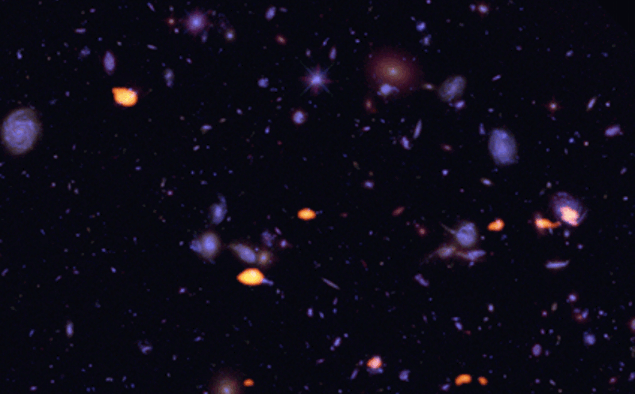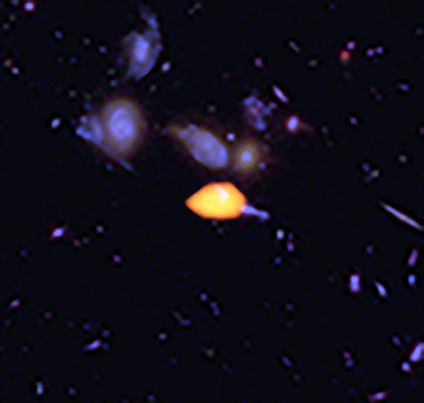Αstronomers using the Atacama Large Millimeter/submillimeter Array (ALMA), revealed new type of galaxies.
The new ALMA observations, which are significantly deeper and sharper than previous surveys at millimeter wavelengths, trace the previously unknown abundance of star-forming gas at different points in time, providing new insights into the “Golden Age” of galaxy formation approximately 10 billion years ago.
Above, Hubble galaxies in blue, ALMA’s newly discovered galaxies in yellow. Credit B. Saxton (NRAO/AUI/NSF), ALMA (ESO/NAOJ/NRAO), NASA/ESA Hubble
The researchers presented their findings today at the Half a Decade of ALMA Conference in Palm Springs, California. The results are also accepted for publication in a series of seven scientific papers appearing in the Astrophysical Journal and one in the Monthly Notices of the Royal Astronomical Society.
Just like the pioneering deep-field observations with the NASA/ESA Hubble Space Telescope, scientists using ALMA surveyed a seemingly unremarkable section of the Cosmos in a so-called “blind search”. This type of observation probes a specific region of space to see what can be discovered serendipitously rather than homing in on a predetermined target, like an individual galaxy or star-forming nebula.
Chris Carilli, an astronomer with the National Radio Astronomy Observatory (NRAO) in Socorro, New Mexico, and member of one of the research teams, said:
“We conducted the first fully blind, three-dimensional search for cool gas in the early Universe. Through this, we discovered a population of galaxies that is not clearly evident in any other deep surveys of the sky.”
ALMA surveyed the Hubble Ultra Deep Field, uncovering new details of the star-forming history of the Universe. This close-up image reveals one such galaxy (orange), rich in carbon monoxide, showing it is primed for star formation. The blue features are galaxies imaged by Hubble. Credit B. Saxton (NRAO/AUI/NSF); ALMA (ESO/NAOJ/NRAO); NASA/ESA Hubble
source ALMA







Leave A Comment